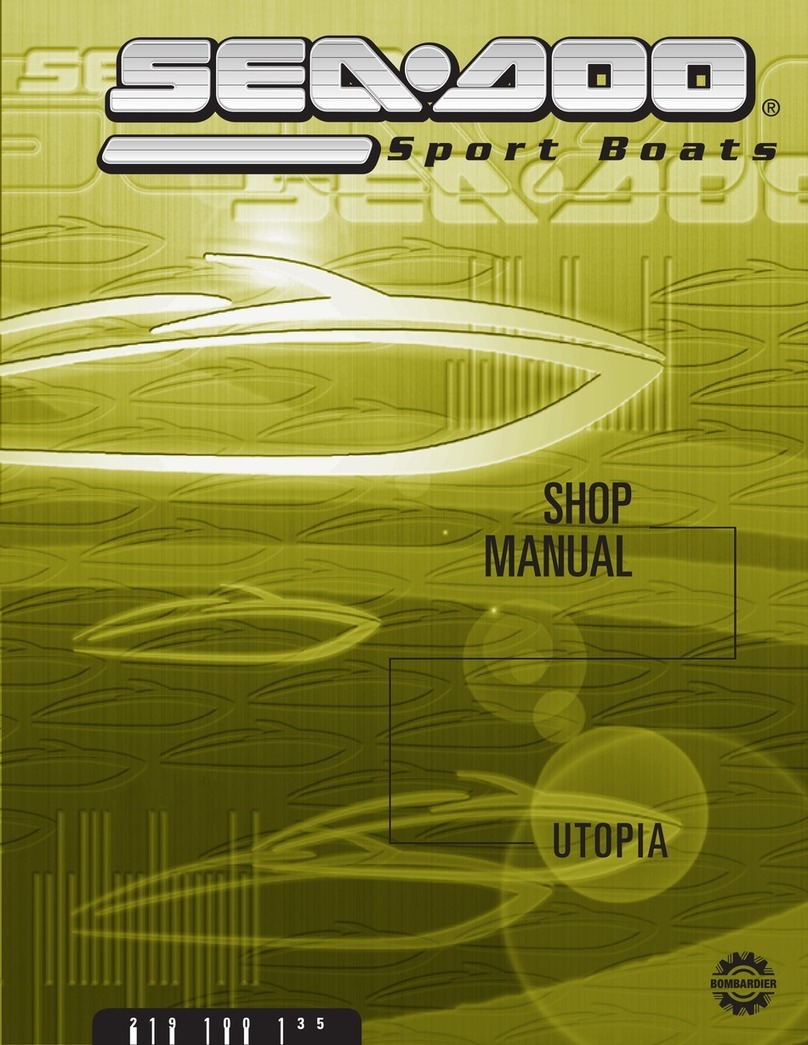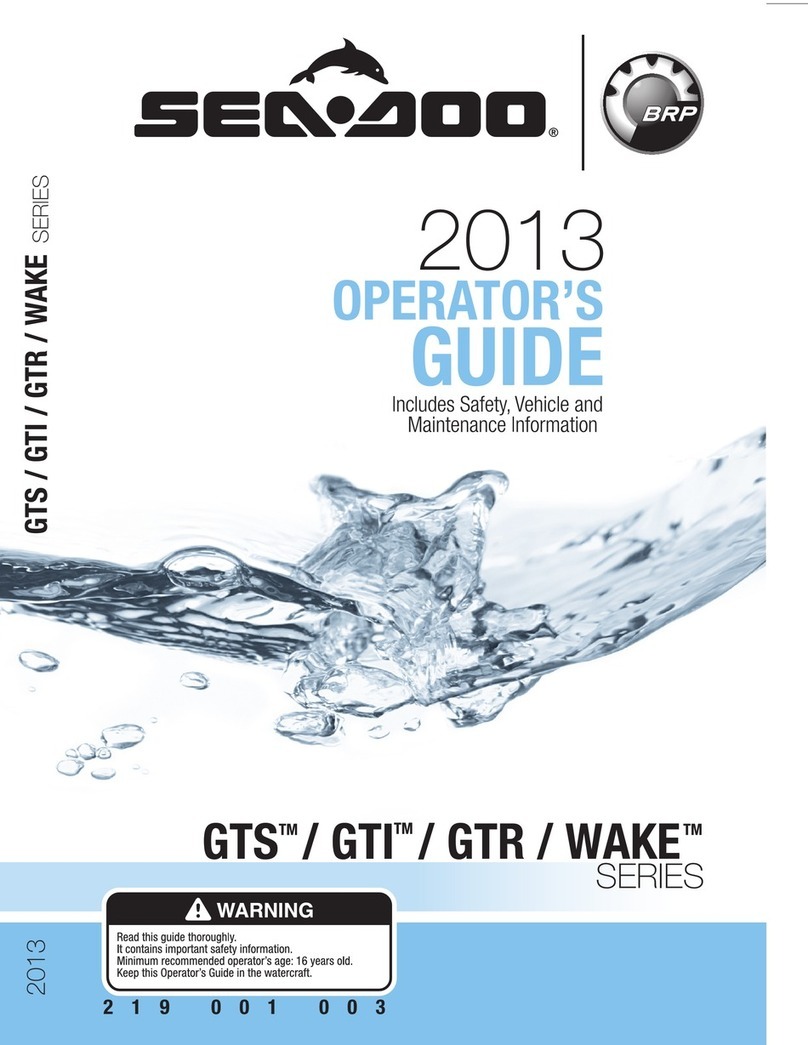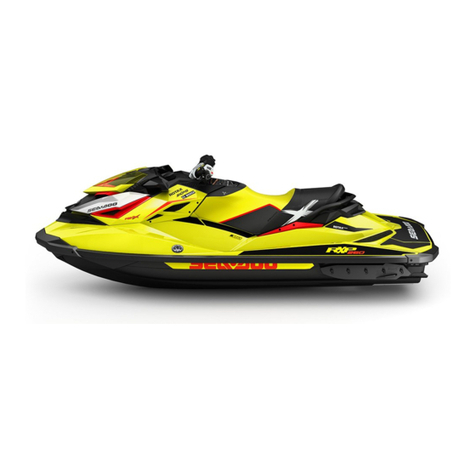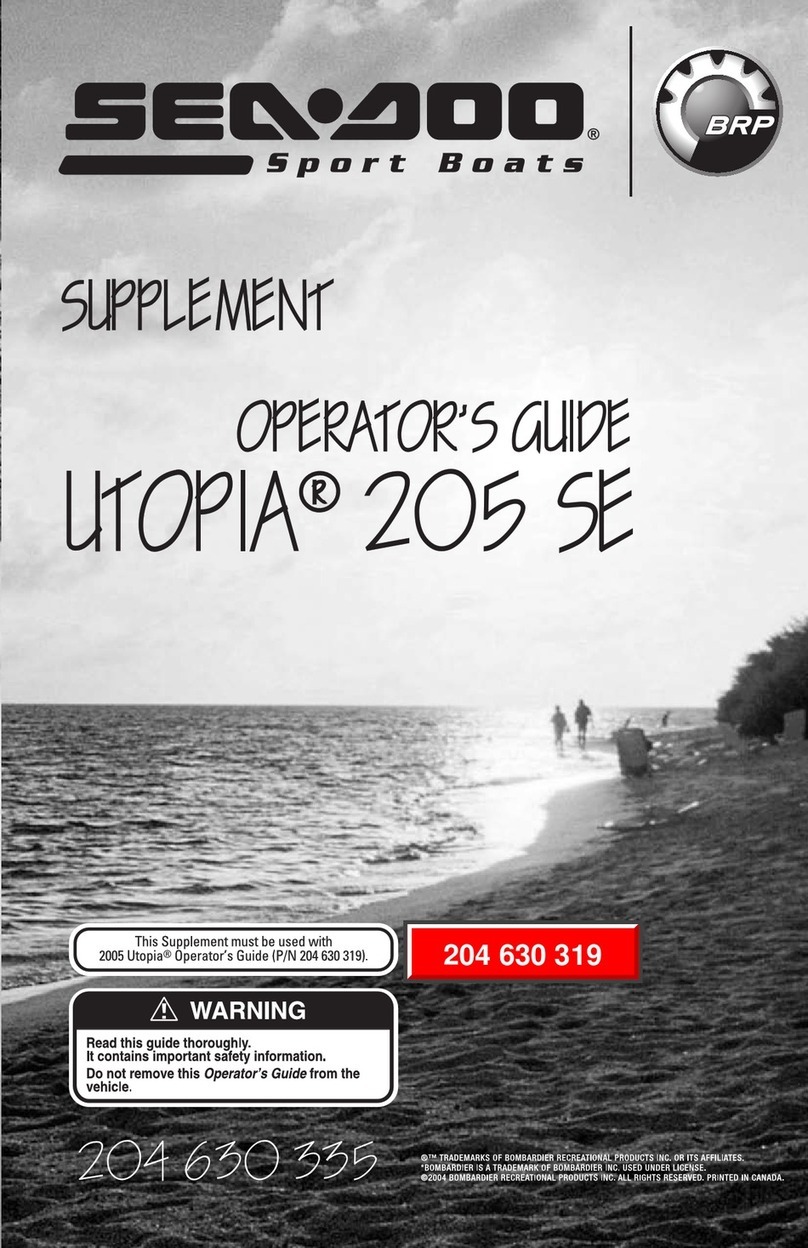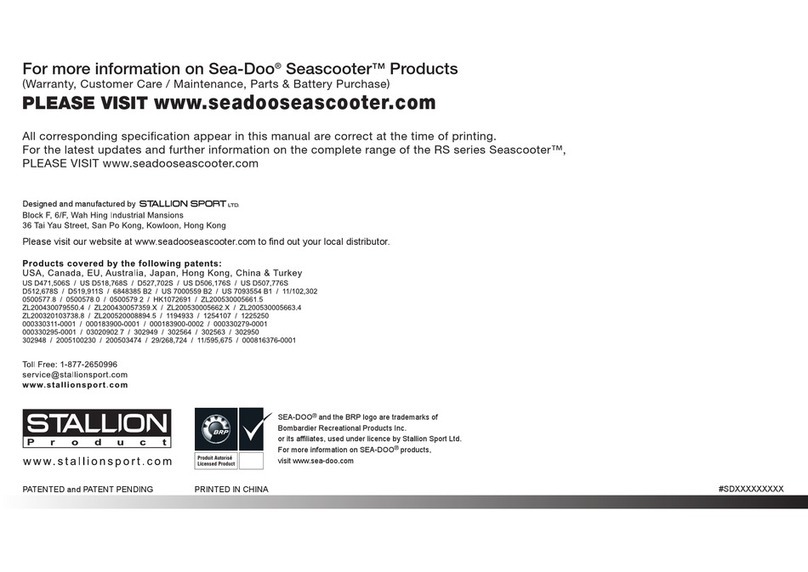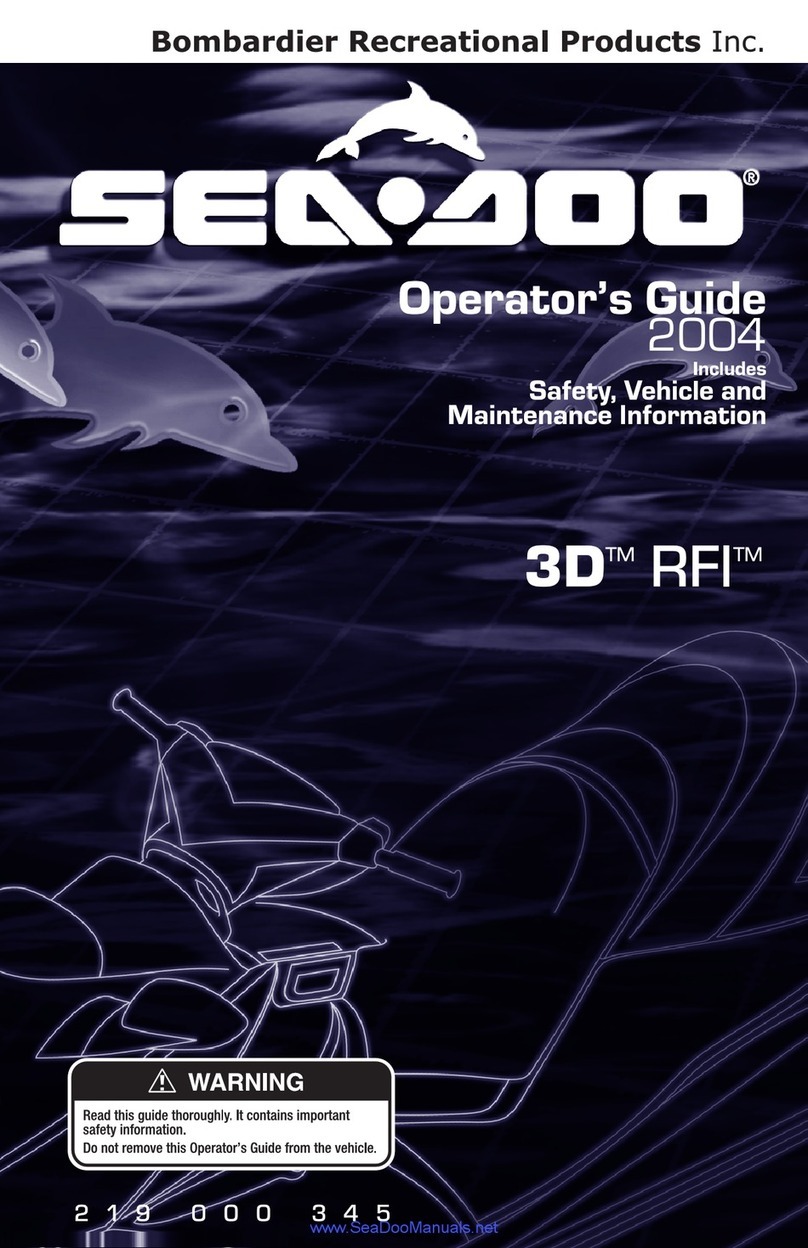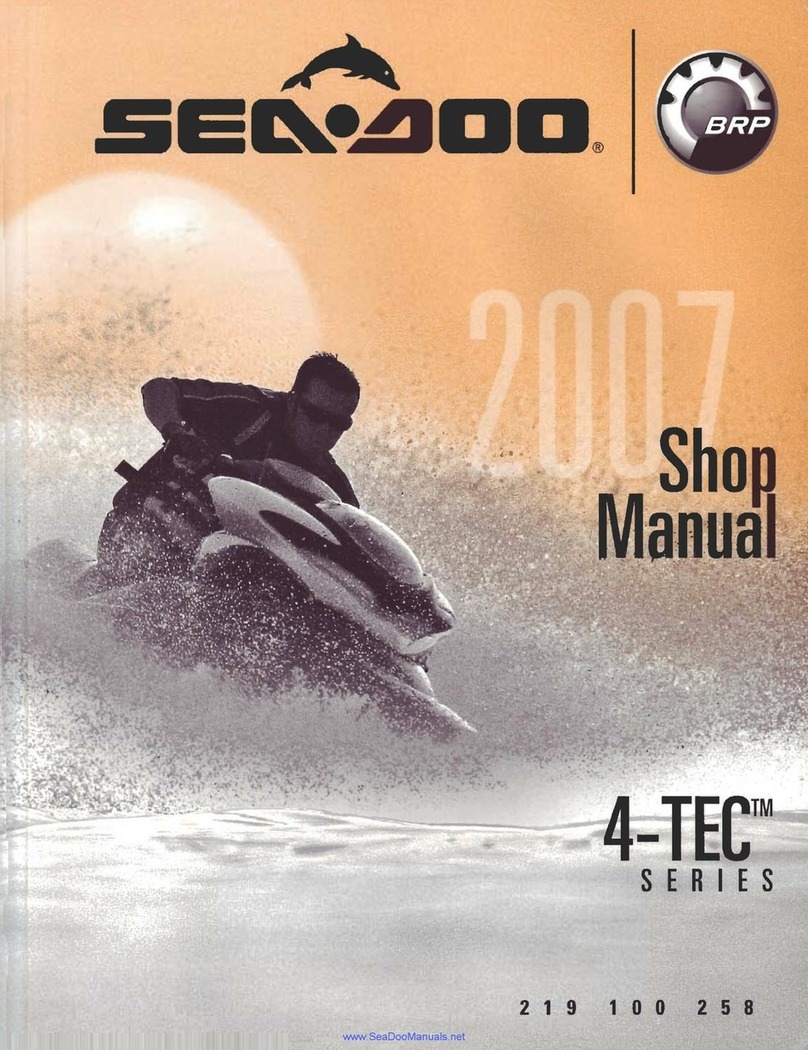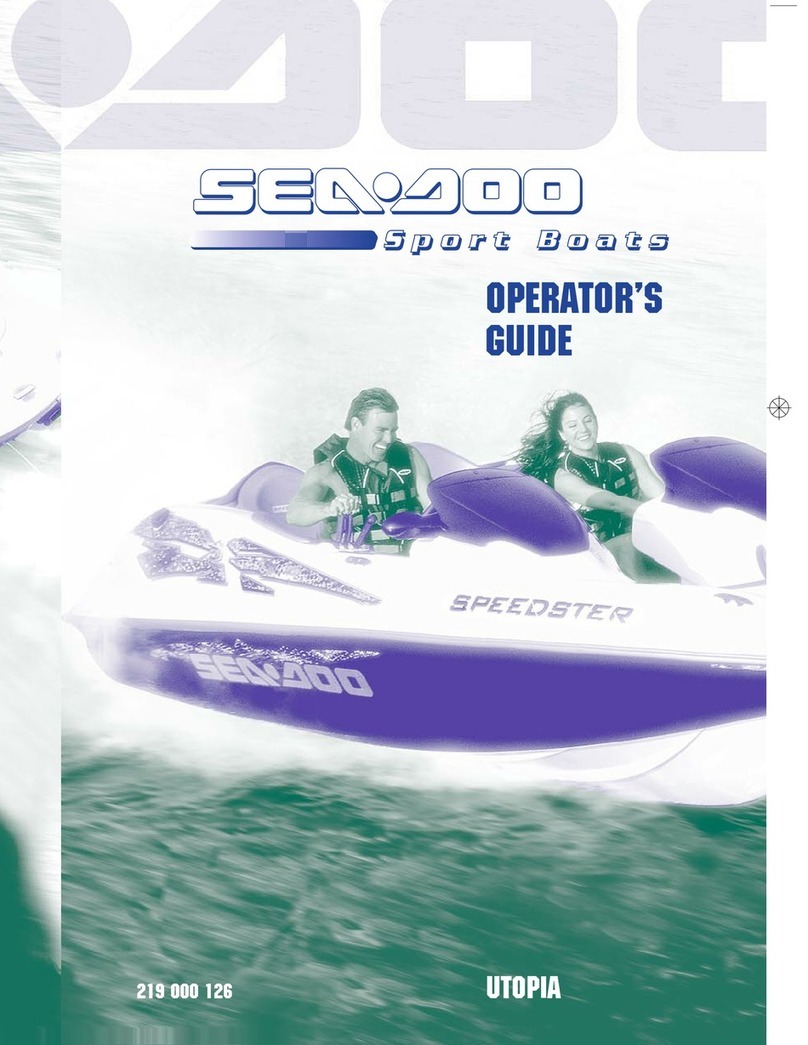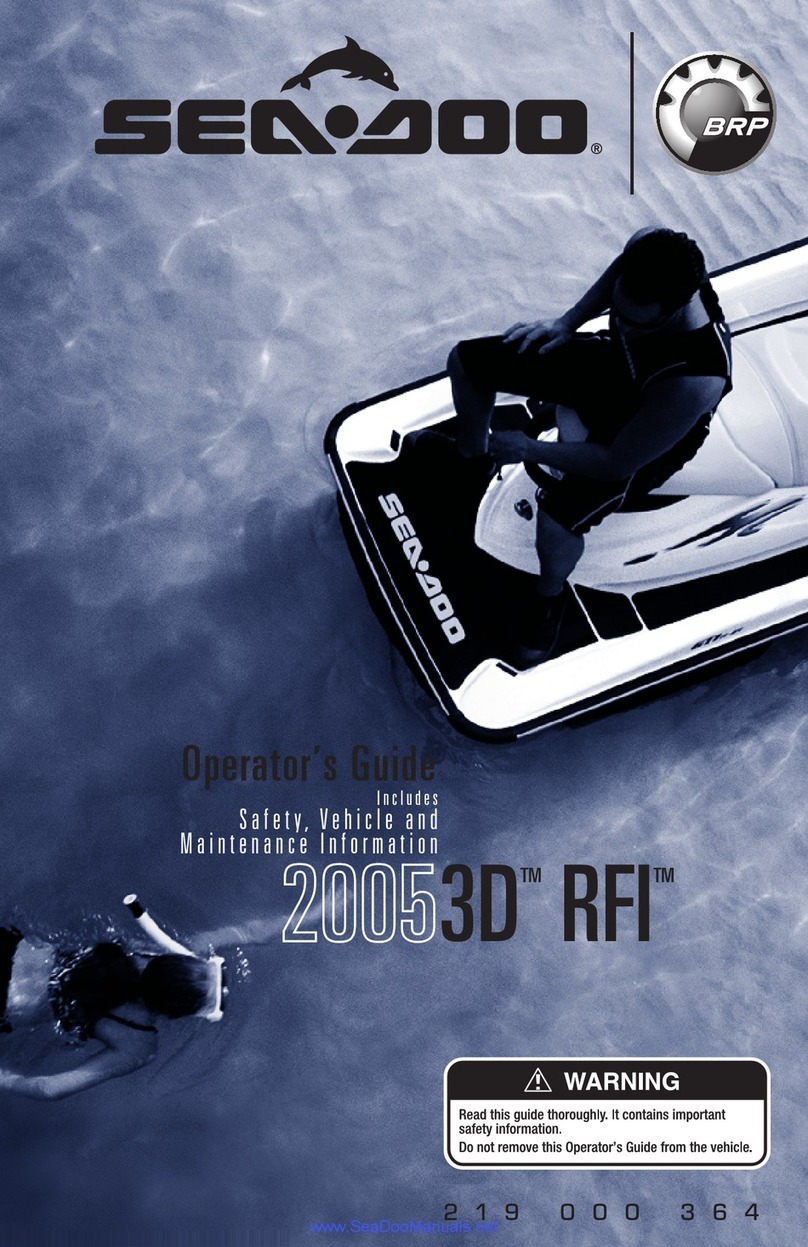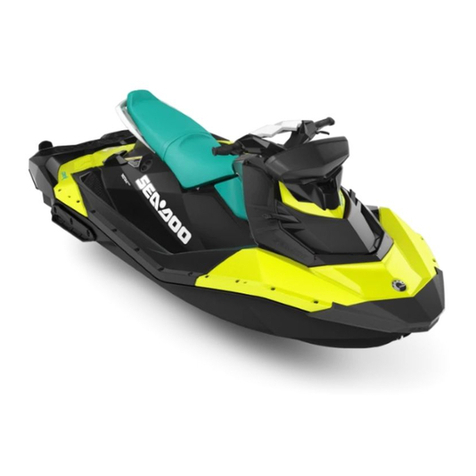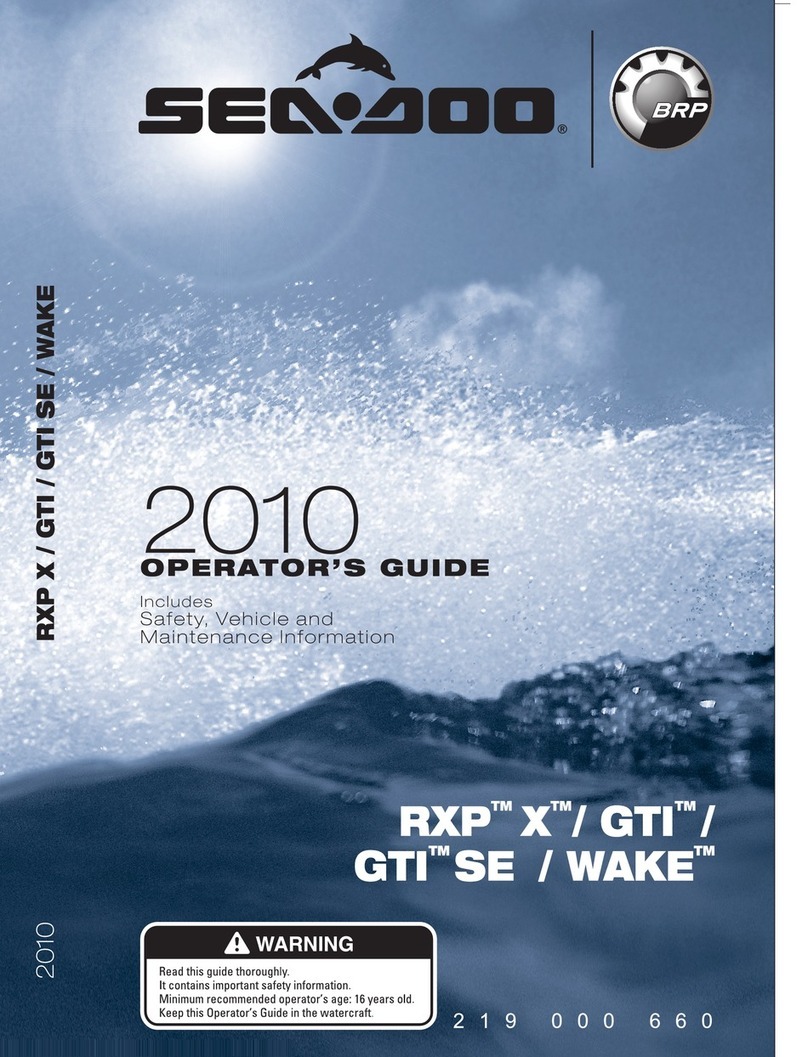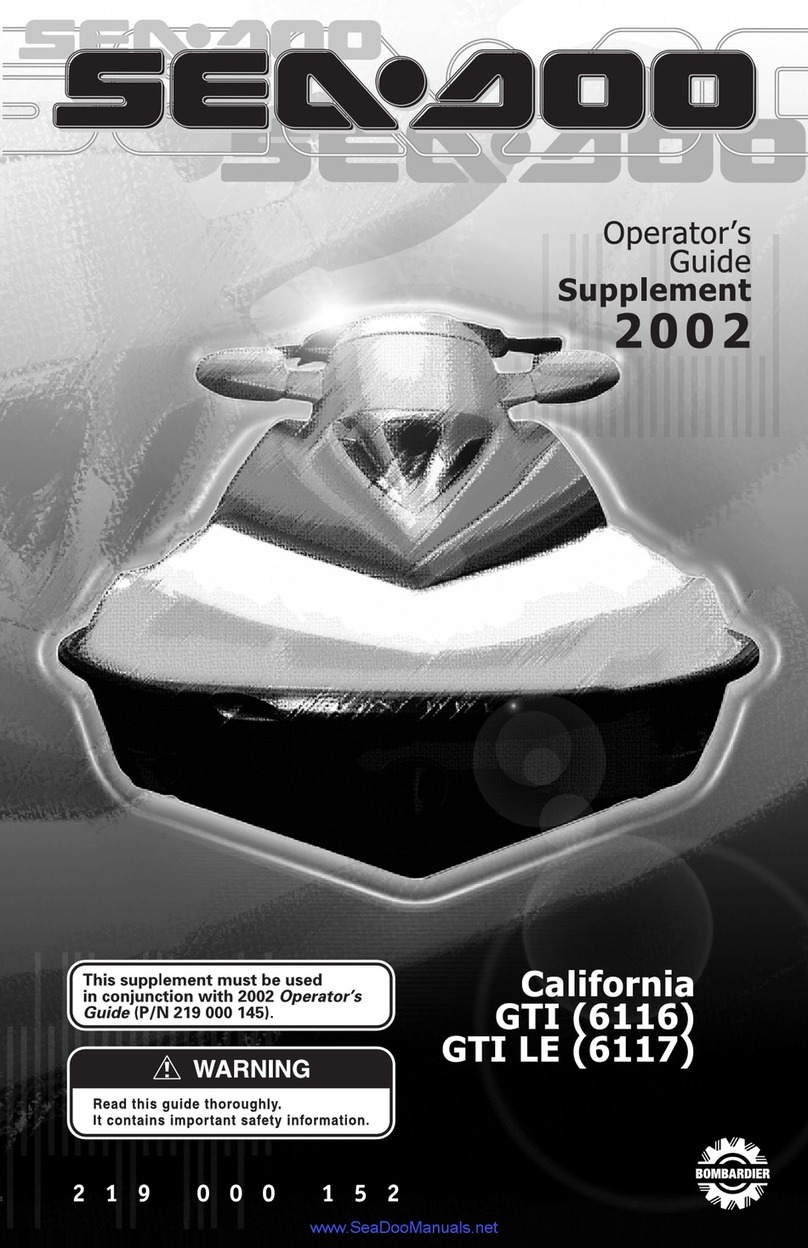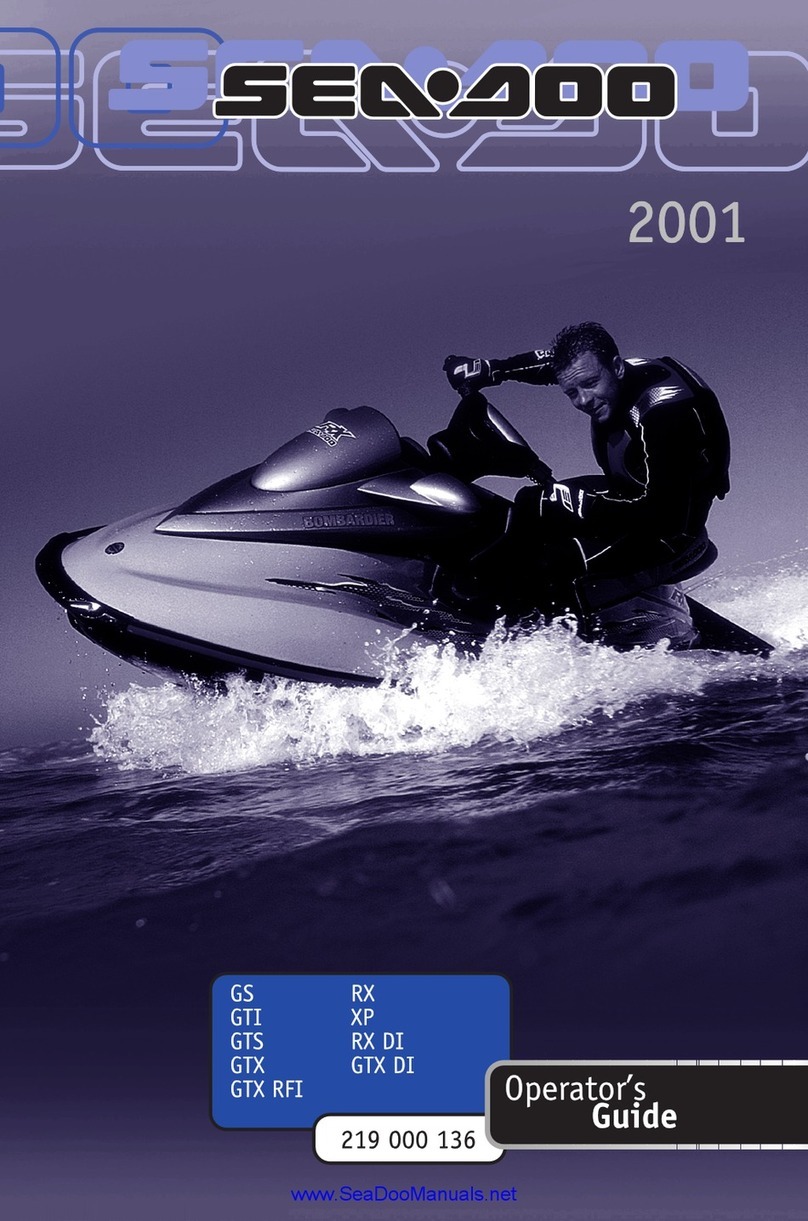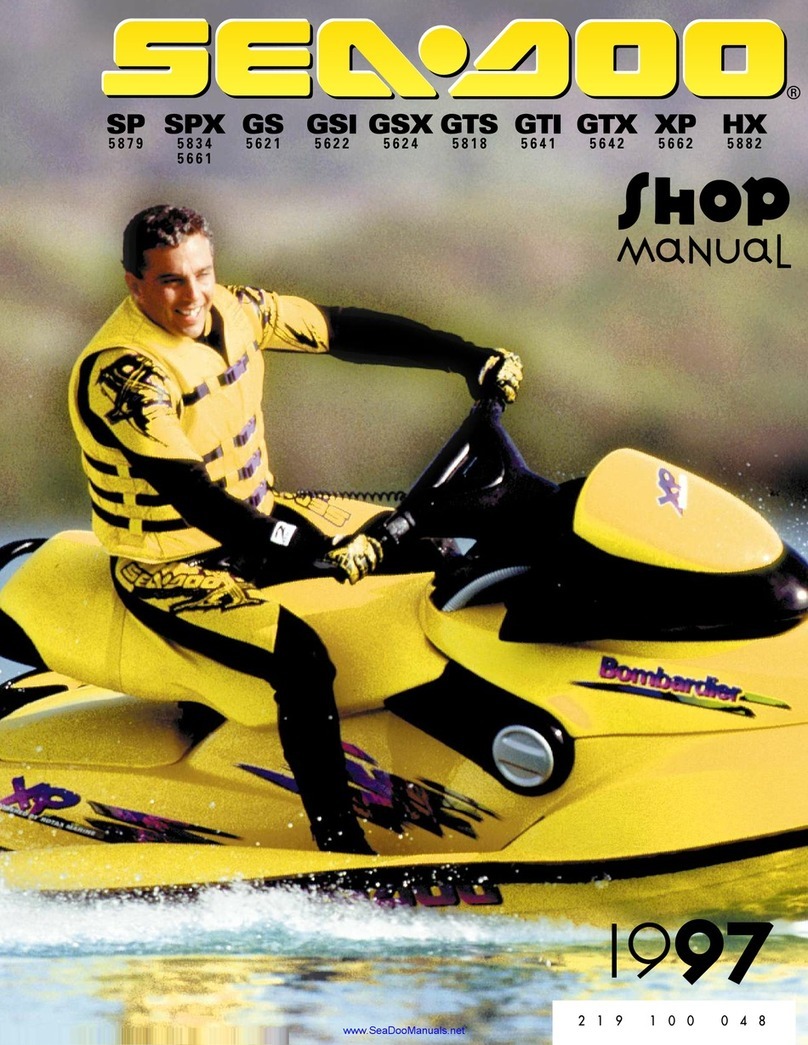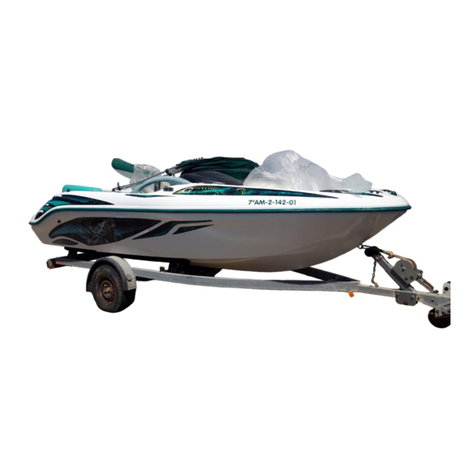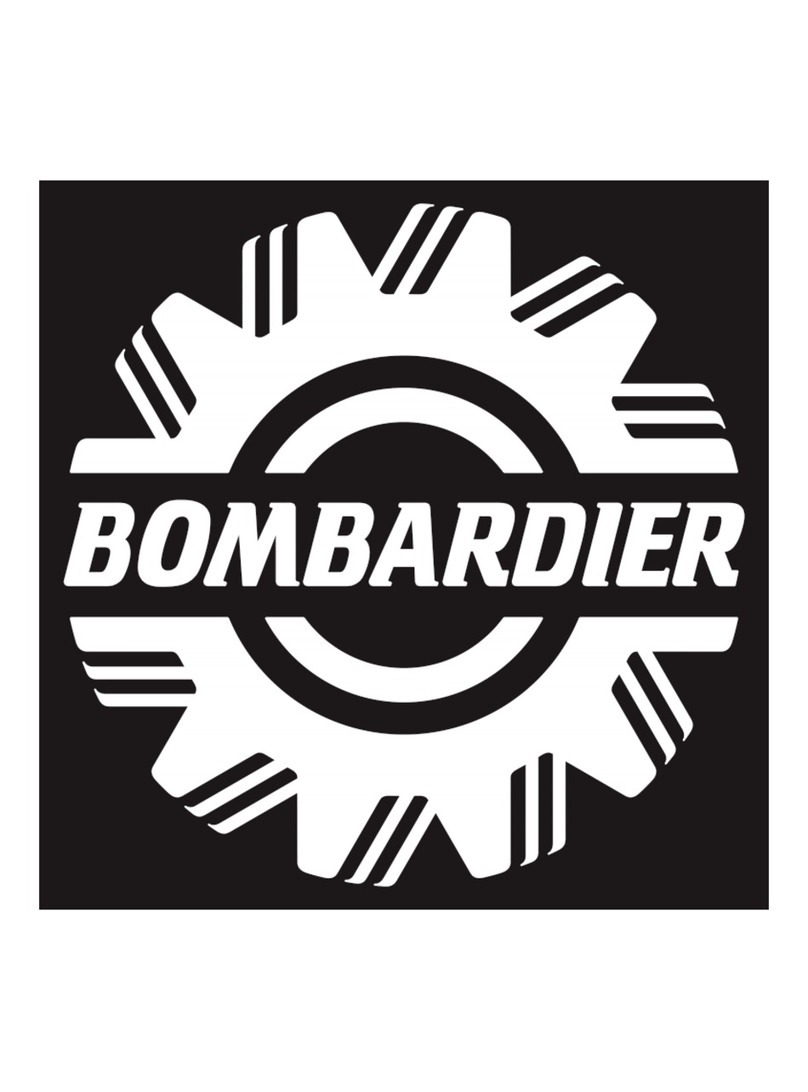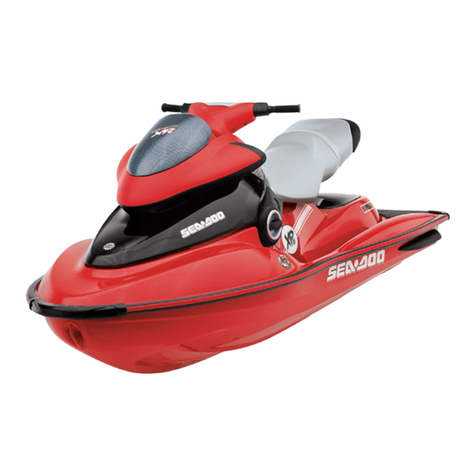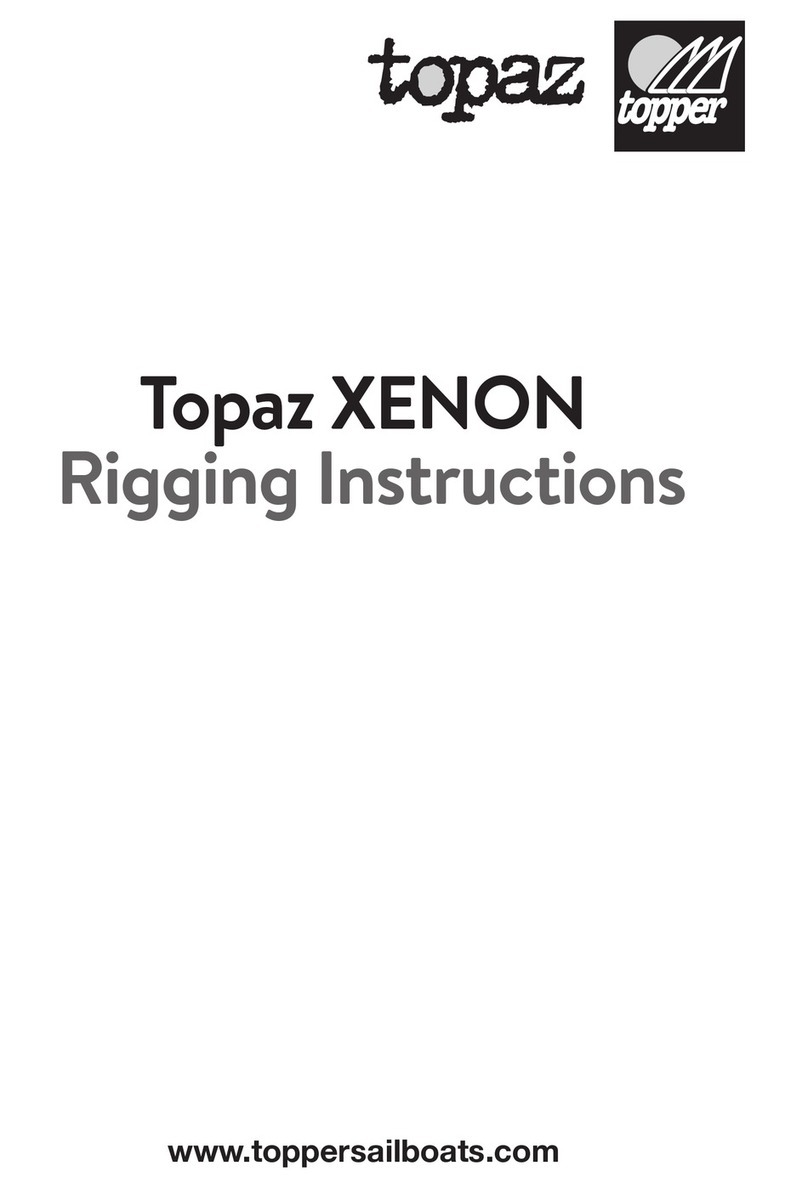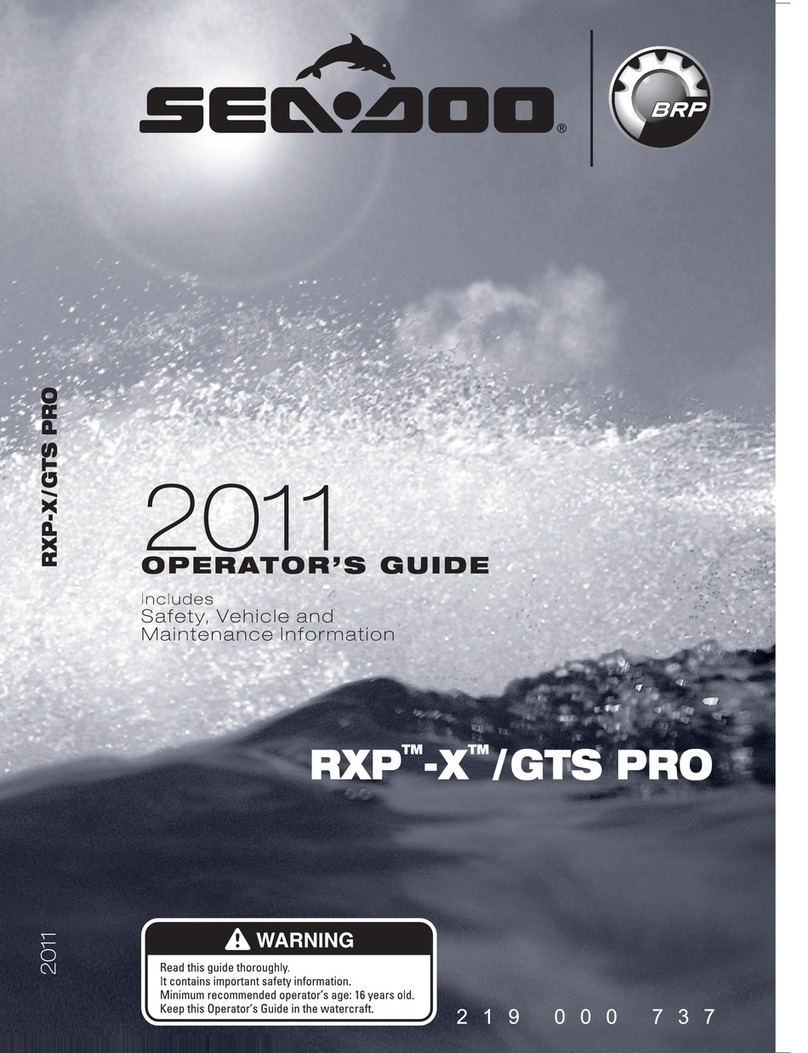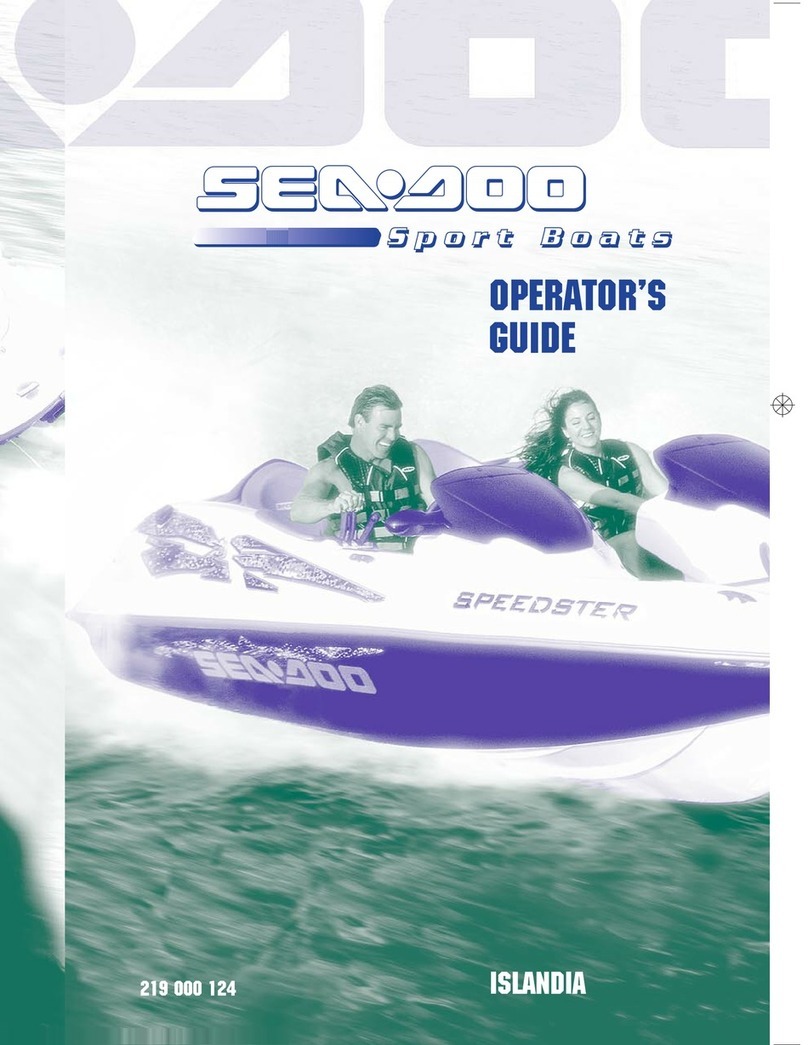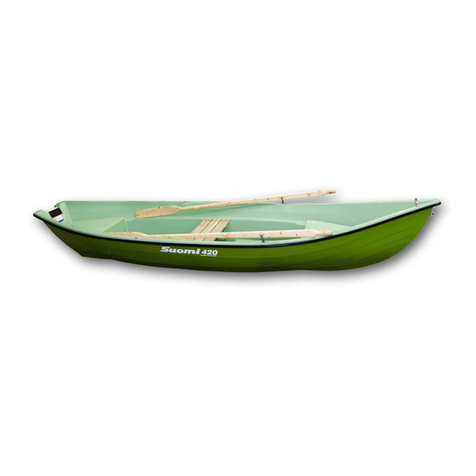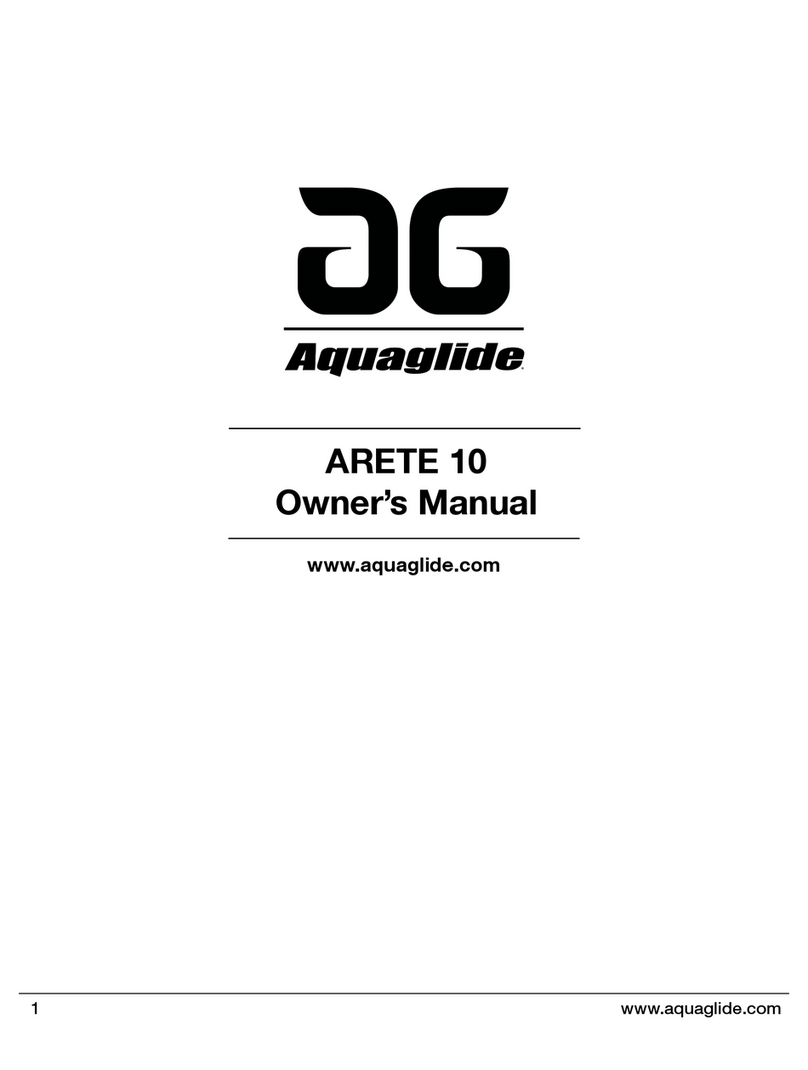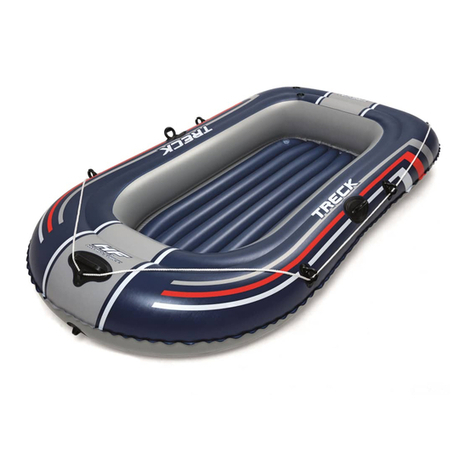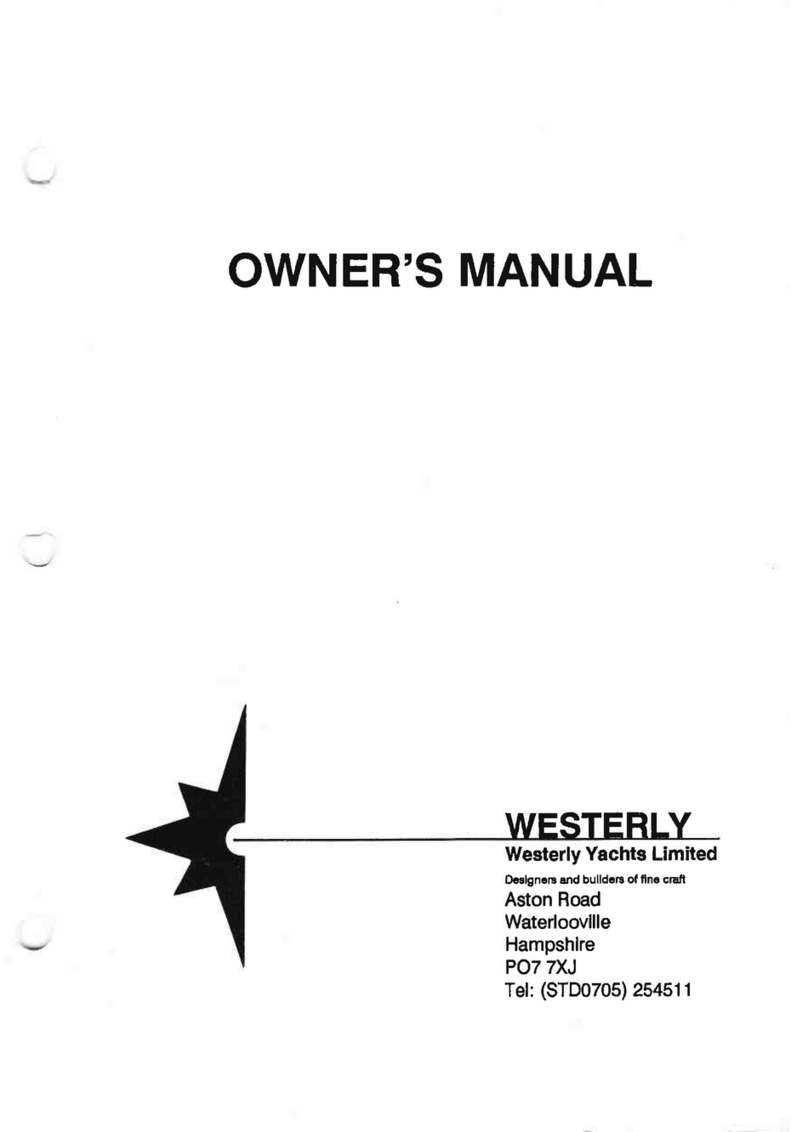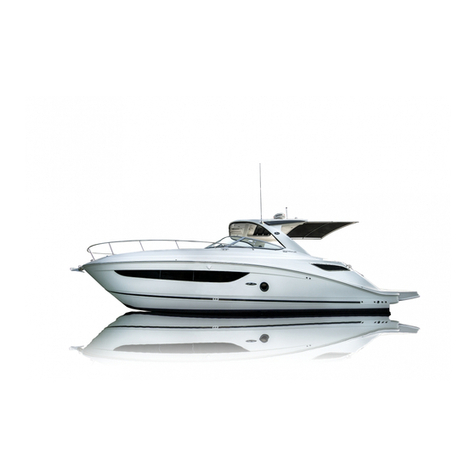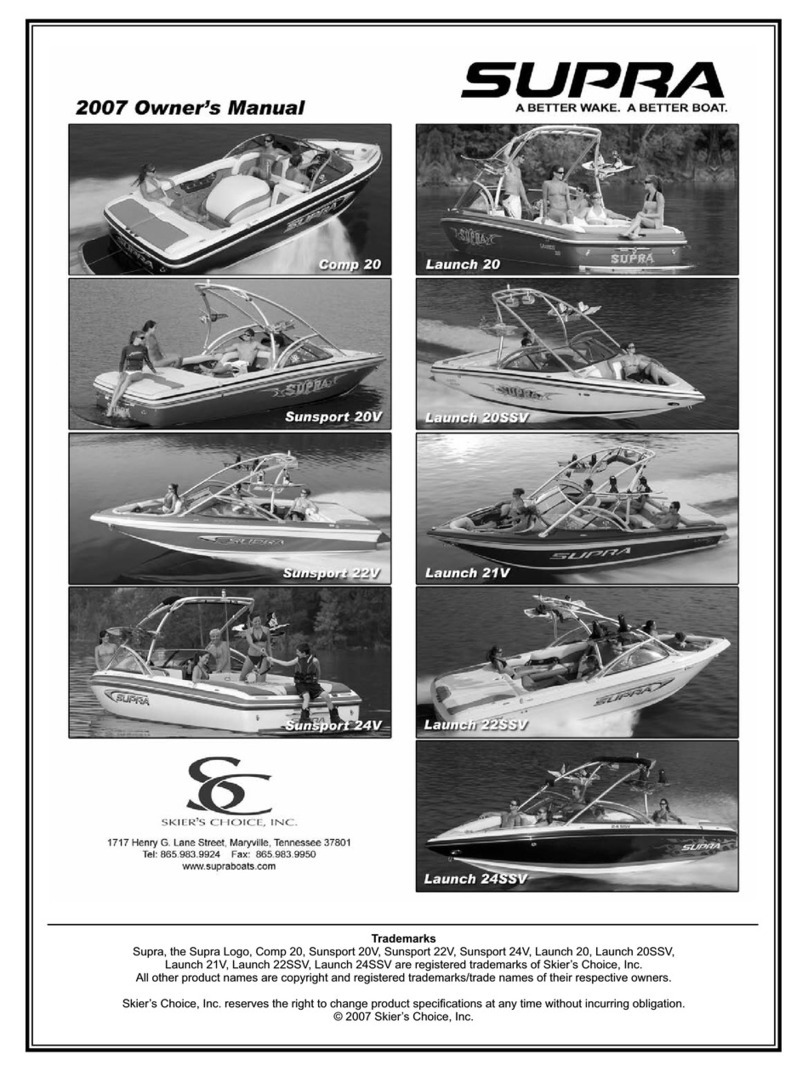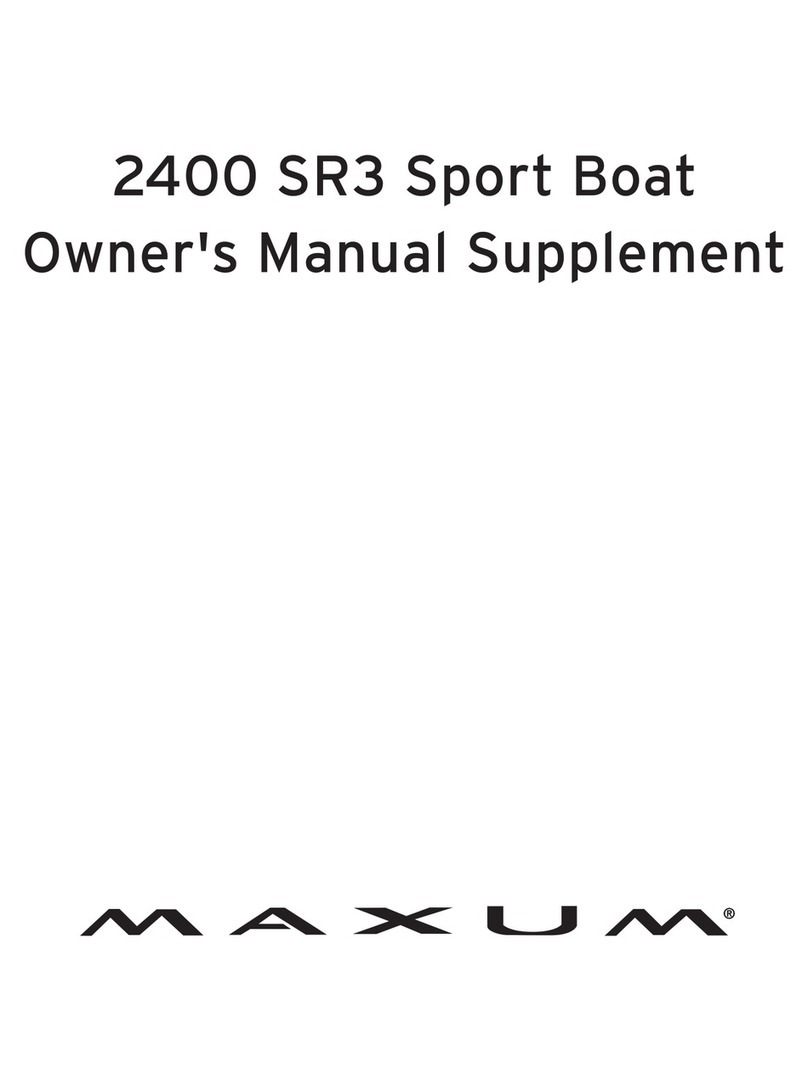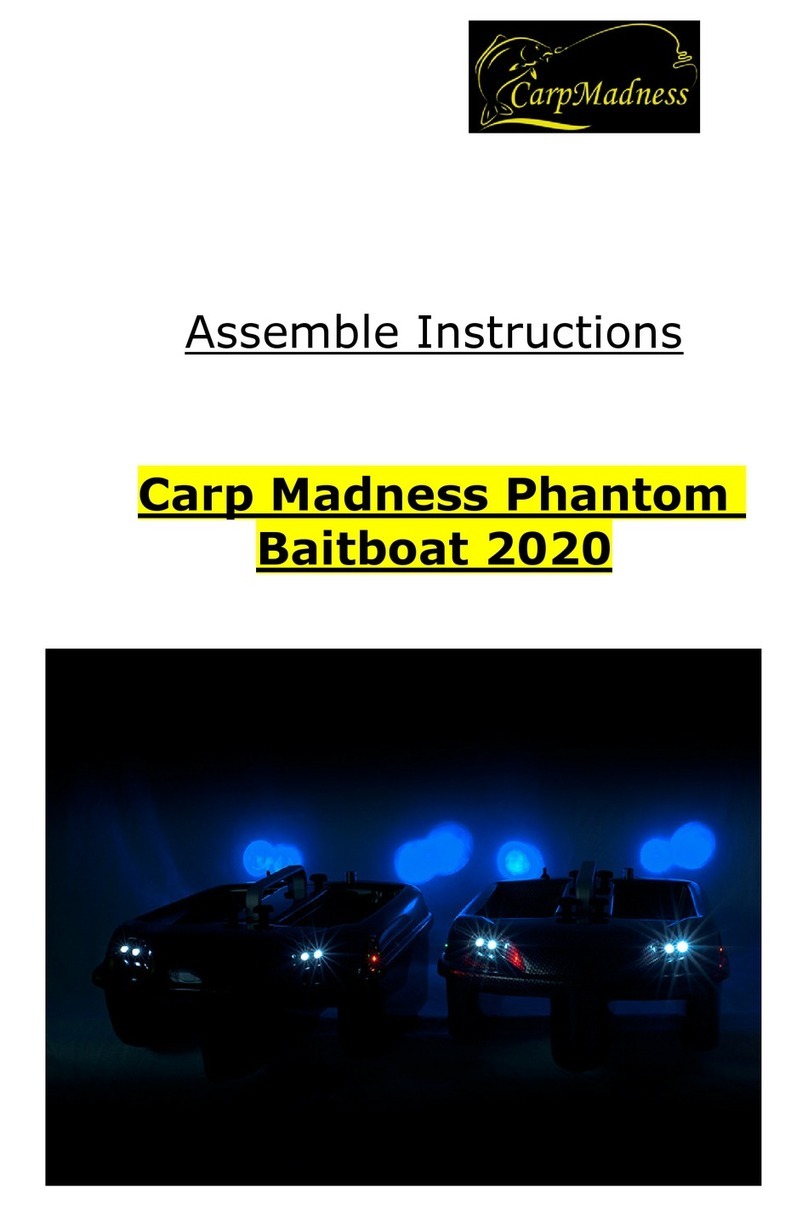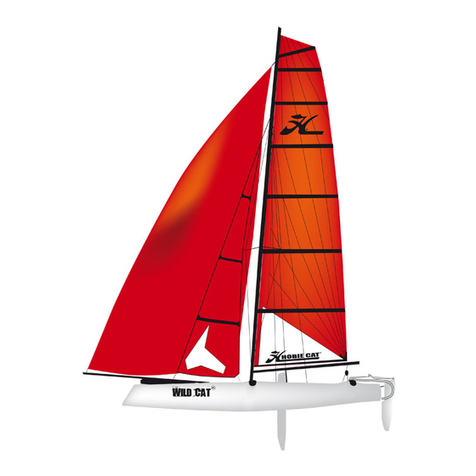
SPECIAL SAFETY MESSAGES
Reminders Regarding
Operation...
Gasoline vapors can explode, result-
ing in injury or death. Always use
blower for a minimum of 5 minutes
before starting engine, then turn it
OFF above idle speed. Use of the
bilge blower should never replace
“smelling” for gasoline vapors.
If at any time, gasoline leaks/odors
are found, do not start the engine.
Have the boat serviced by an autho-
rized Sea-Doo Sport Boats dealer.
Always keep in mind that as the
throttle lever is returned to the idle
position, less directional control is
available. To turn the boat, both
steering and throttle are necessary.
Like any other boat, this boat has no
brake. Stopping distance will vary
depending on initial speed, load,
wind, and water conditions. Prac-
tice stopping and docking in a safe,
traffic-free area to have an idea of
how long it will take to stop the boat
under varying conditions. Do not
release the throttle when trying to
steer away from objects. You need
throttle to steer. Do not use the
boat's reverse to stop.
Do not start or operate the boat if
any person is not properly seated
in a seat intended for use when un-
derway (not the sun deck or swim
platform) or if a person is nearby in
the water.
The boat's jet thrust can cause in-
jury. Always accelerate slowly, and
decelerate in a controlled fashion.
Observe the instructions on all safe-
tylabels. Theyaretheretohelpas-
sure that you have a safe and enjoy-
able outing.
Riding with passenger(s) or pulling
other boats, tubes, a skier or a wake
boarder makes the boat handle dif-
ferently and requires greater skill.
Certain boats may come equipped
with tow eyelets, a ski pole or a
wakeboard tower which can be
used to attach a tow rope for a ski-
er, tube or wakeboarder. Do not
use these attachment points or any
other portion of the boat to tow a
parasail or another craft. Personal
injury or severe damage may occur.
In shallow water, proceed with
caution and at very low speeds.
Grounding or abrupt stops may re-
sult in injury to you, your passengers
or others. The jet pump may pick up
debris and throw it rearward causing
a risk of injuring people or damaging
the jet pump or other property.
Engine exhaust contains carbon
monoxide (CO), which can cause
injury or death if inhaled in sufficient
quantities. Do not operate the boat
in a confined area or allow CO to ac-
cumulate in or around the boat, or in
enclosed or sheltered areas. Such
as when docked, or when rafting.
Be aware of risk of CO from exhaust
of other boats.
Educate all occupants about the
risks and symptoms of CO accumu-
lation and CO poisoning, particular-
ly from engine and generator ex-
haust. Educate them about where
engine exhaust outlets (and gen-
erator outlets if so equipped) are
located. Regularly inspect exhaust
and generator system and outlets
for component failures or obstruc-
tions.
Combustion engines need air to
operate; consequently this boat
can not be totally watertight. Any
maneuvers such as figure eights
that cause the upper deck to be un-
der water may cause severe en-
gine problems due to water inges-
tion. Refer to the
SPECIAL PROCE-
DURES
and
WARRANTY
sections
contained in this Operator's Guide.
10 _______ SAFETY INFORMATION ________




















